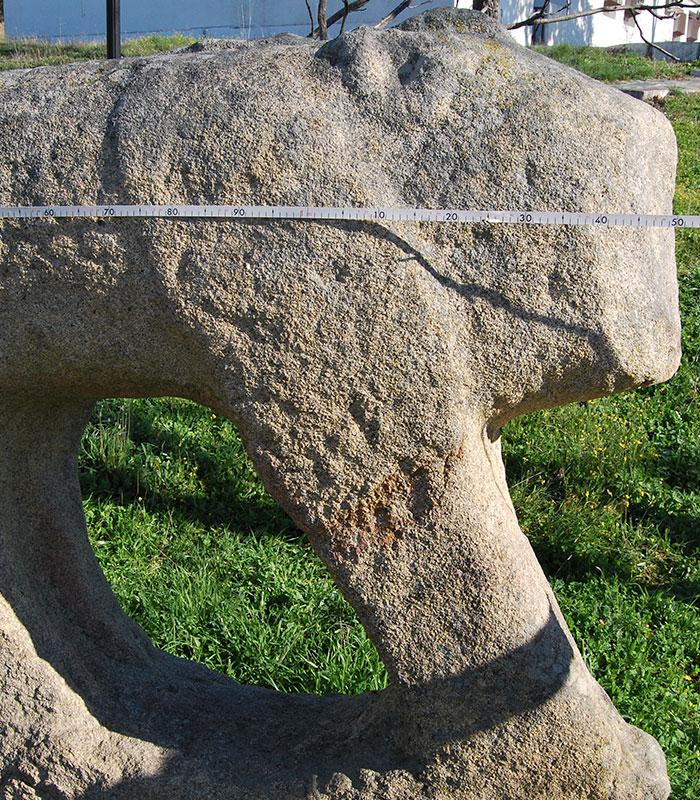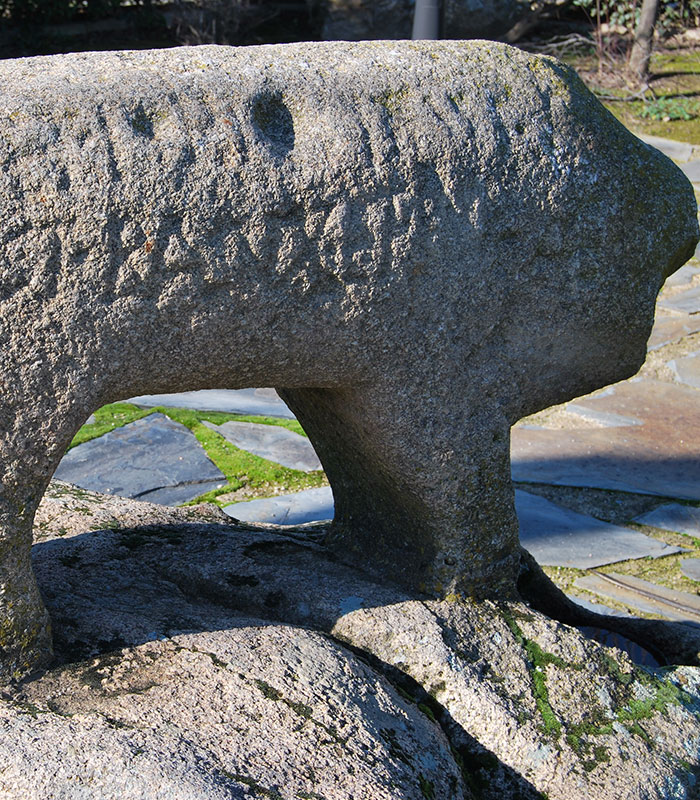Verracos (animal figures sculptured in stone) are to be found in the Villuercas-Ibores-Jara Global Geopark of the UNESCO in the form of the noteworthy examples which can be observed in the villages of Villar del Pedroso, Valdelacasa de Tajo, and Peraleda de San Román. These exceptional cultural and archaeological manifestations of the Vetton people are to be found above all between the Tajo and Duero rivers. They are from the period between the 4th century B.C. and the 1st century A.D. What were they used for or what was their meaning? The mystery has still not been resolved.
We are here concerned with zoomorphic structures which are traditionally known as verracos or breeding pigs. Despite this, on occasions they appear to represent bulls (the famous ‘Toros de Guisando’ are perhaps the best known) or wild boar. Their features are highly simplified and schematic, always representing a male animal standing on a base and almost always sculpted in granite. These sculptures were executed by the Vettones and their meaning is unknown, although there are several theories. They may be religious monuments to protect pastures and symbolise their safeguarding by the gods.
Another likely interpretation is that these stone animals acted as markers to indicate the most important grazing lands and drovers’ roads. It should be taken into account that for these peoples of the Iron Age stockbreeding was of paramount importance.

